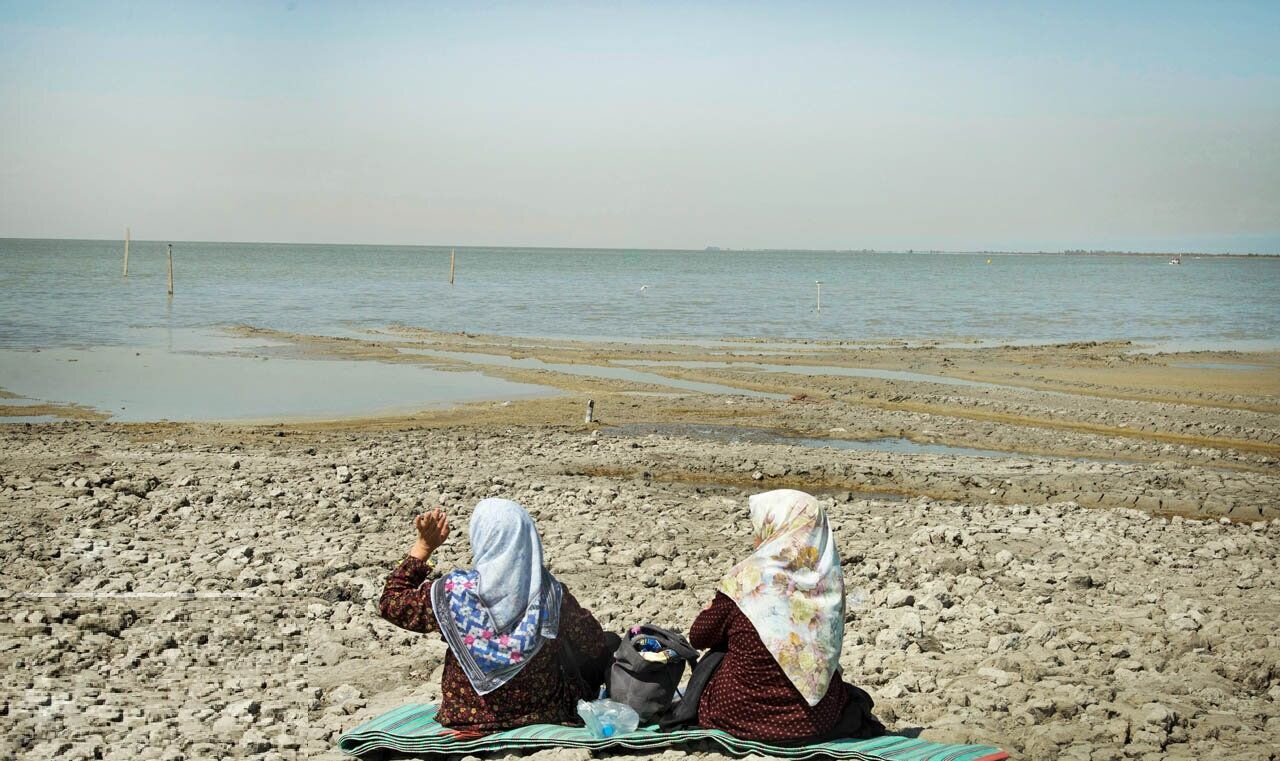Shrinking Caspian Sea likely to drain coastal wetlands

TEHRAN –Studies show that the Caspian Sea water level will decrease by 9 to 18 meters by the end of this century, leading likely to the drainage of coastal wetlands, particularly Anzali wetland and Gorgan Bay.
It is estimated that Anzali wetland will completely dry up in 35 years, and Gorgan Bay is expected to undergo severe dryness in the next 10 years, IRNA reported.
The Caspian Sea, the largest lake in the world with a coastline that stretches seven thousand kilometers, has turned the north of the country into a beautiful resort attracting millions of travelers and tourists every year.
The sea is bounded by Kazakhstan to the northeast, Russia to the northwest, Azerbaijan to the west, Iran to the south, and Turkmenistan to the southeast; it has an area of 600,384 square kilometers.
Hosting 400 aquatic species and holding third place in terms of oil and gas reserves under its bed after the “Persian Gulf” and “Siberia” has doubled the value of this basin, while sturgeon and Caspian seals are the most important inhabitants of the lake.
The Caspian Sea has always experienced many water-level changes and is known for its fluctuating nature, characterized by recurring cycles of rising and falling sea levels.
About 1500 years ago, the water level of the Caspian Sea dropped to 33 meters below the ocean’s water level, the water reduction led to the formation of sand dunes on the southern shores of the sea. However, from 1977 to 1995, the water level experienced a sudden increase so that many parts of the land and even many houses along the coastline submerged under water.
For several years now, the water level in the Caspian has undergone reduction and it is continuously diminishing.
According to a study, in the next 76 years, the level of the Caspian Sea will decrease between 9 and 18 meters.
The retreat of the Caspian Sea and the decrease in its water level will increase the salt concentration of the water, develop salt marshes, and desertify the coasts of Caspian states.
It also causes the inlet of the coastal wetlands in the north of the country to shift away from the seashore, which speeds up water transfer from the coastal wetlands to the sea which drains the wetlands.
Studies have revealed that during the Iranian year 1401 (2022 - 2023), the water level of the Caspian Sea witnessed a significant decrease of 26 centimeters, surpassing the already concerning decrease of 24 centimeters observed in 1400, ISNA quoted Seyyedeh Masomeh Bani-Hashemi, the director of the National Center for Caspian Sea Studies and Research, as saying.
“In the past two years, the water level of the Caspian Sea has experienced a significant decrease of approximately 50 centimeters,” she stated.
Since 1995, the water level of the Caspian Sea has steadily declined, resulting in an approximate decrease of two meters over the years, she mentioned.
Ever since the first water level measuring station was established in Baku in 1837, and the Caspian Sea's water fluctuation was registered by the device's oscillator, the sea's behavior has shown various levels of ups and downs.
“Rainfall and inflow of river water are the key drivers of the Caspian Sea's water level, however, it is the water flowing in from the rivers that has the most significant impact on raising the water level,” Bani-Hashemi said and added: “The second most vital factor is surface precipitation.”
One of the most crucial factors in the loss of water from the surface of the Caspian Sea is the annual evaporation of one meter, which can vary depending on the different coasts, she said.
In the southern regions of the Caspian Sea, the yearly evaporation rate is significantly higher, she added.
The availability of river water resources can vary and is estimated to range from 300 to 320 billion cubic meters per year and this estimate takes into account factors such as climatic conditions and water consumption patterns, she noted.
MT/MG
